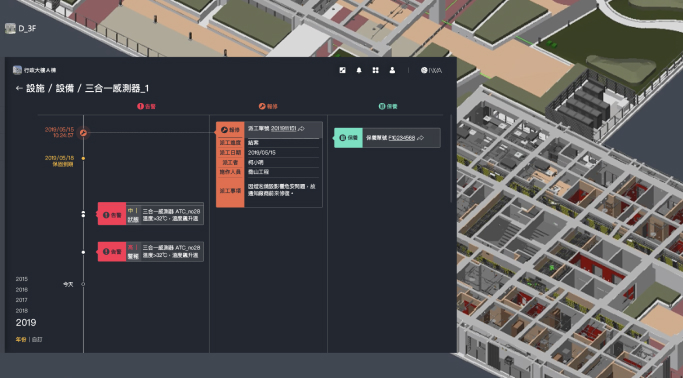Facility and Property Management System
Human-Centered Management, Intelligent Services
Equipment management and routine maintenance are core tasks in community operations. The IWA Facility Management System provides comprehensive tracking and analysis tools for every lifecycle event of building facilities. Routine maintenance schedules and repair requests are fully digitized, with operations handled through both web and mobile apps. This enhances real-time responsiveness and alert efficiency, reduces manpower requirements, and minimizes data inconsistencies among inspection personnel.

The IWA Property Management System seamlessly receives all data and messages from the IWA Energy & Carbon System and the IWA Smart Building Platform. At its core, the system is centered on building users—whether they are facility managers, tenants, visitors, or residents—enabling them to connect with a wide range of services offered within the building.

System Features
Site Optimization
The system is designed at the foundational level to support various application scenarios across different site types—including residential buildings, commercial offices, shopping centers, factories, and other spaces—ensuring broad compatibility and adaptability.
Technologically Robust
With extensive experience in property management across various site types, we are well-versed in building MEP control and sensing device deployment, and capable of integrating net-zero carbon-related modules.
Scalability
The system supports expansion based on existing site modules and allows the development of custom modules tailored to specific site needs, with seamless integration to various cloud-based data platforms.
Human-Centered Service
Centered on property services, the system enhances usability and core functionality, reduces the workload of operational staff, and ensures safe and convenient service delivery.
Life Cycle
The life cycle of a facility primarily includes three elements: alerts, repairs, and maintenance, which are arranged in chronological order along a timeline.
Anomaly Analysis
Provides asset statistics and related attributes, including original/residual value, repair costs, past and projected maintenance expenses, and asset condition reports.
Challenges and Benefits
Outdated Equipment Management
Manual Inventory Dependency
Manual Inventory Dependency
Facility System
Life Cycle Management
Data Analysis
Through life cycle management, all information from procurement, installation, maintenance, and repair to decommissioning is comprehensively recorded in the system. This enables more effective planning and control of resource usage, reduces costs, improves efficiency, and supports the achievement of sustainability goals.
Inspection Staff
Troubleshooting is Difficult
Troubleshooting is Difficult
Property Management System
Data Analysis
- Using inspection tools or mobile applications enhances efficiency and enables tracking and recording of each inspection activity.
- With technical support features such as GPS positioning and barcode scanning, inspection points can be located more accurately, reducing the difficulty of troubleshooting for inspection personnel.
System Interconnection
The ability to import COBie files generated from BIM allows users to avoid manual equipment setup. The IWA platform also features an open API that enables interconnection with third-party property management software.
Failure Prediction and Prevention
By collecting and analyzing data, the system can predict potential equipment failures and enable preventive maintenance, thereby reducing downtime.
Convenient Operation and Management
To help administrators track facility maintenance plans more easily, the system offers a calendar-style user interface. It also includes a built-in operations schedule that actively notifies managers of upcoming tasks.
IWA System Sturcture
